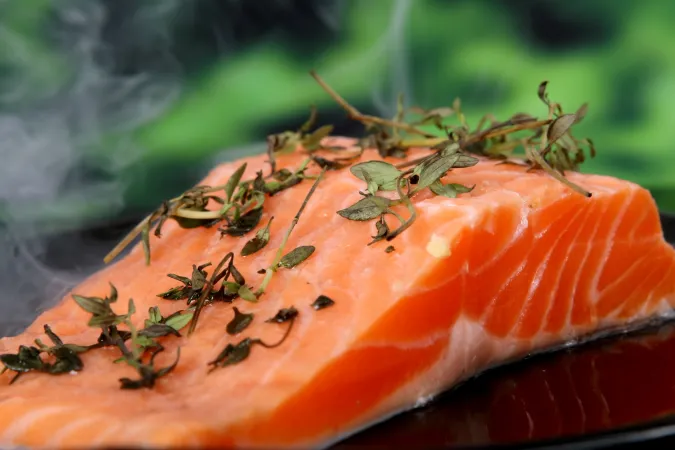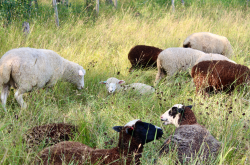Off the hook: Canadian aquaculture grows amidst environmental change
With the longest coastline in the world, Canada has an enduring and complex relationship with commercial fishing. While this industry represents a substantial fraction of the Canadian economy, it has historically brought about massive environmental impacts and threatened the longevity of wild fish populations.
As we enter the United Nations Decade of Ocean Science for Sustainable Development (2021-2030), one of the shared goals of this Ocean Decade is to ensure the long-term sustainability of ocean industries as sources of food and employment. In an era of changing climate and growing food insecurity, aquaculture — breeding, raising, and harvesting fish, shellfish, and aquatic plants — has emerged as an effective complement to harvesting wild fish stocks.
Casting back: History and context
Although similar techniques were practised earlier, fishers in France began to publish and disseminate methods for harvesting and fertilizing fish eggs in the 1840s. The first hatcheries in Canada, built on the Fraser River in the 1890s, reared salmon to restock watersheds affected by intensive fishing, mining, and logging. By the early 1970s, aquaculture had begun to shift towards seafood production amidst growing concern about the overexploitation of wild fish stocks.
As scientists had predicted, Canada's fishing industry experienced a devastating collapse in the 1990s; tens of thousands of jobs were lost, and wild northern cod populations have yet to fully recover. However, demand for fish protein continued to grow as the health benefits of eating fish become more widely known. Globally, through an ongoing "blue revolution" of rapid innovation and improved efficiency, aquaculture surpassed harvesting wild stocks as the main source of seafood in 2014.
Even as fishing practices become more sustainable, aquaculture products remain a vital fraction of seafood production. The impacts of climate change, including warmer water and less dissolved oxygen, make it difficult for fish to survive in the wild. Increased atmospheric carbon dioxide makes water more acidic, which hinders the growth of shells. In the last decade, this ocean acidification has killed tens of millions of scallops.
Within this changing environment, there are also increasing efforts to incorporate Indigenous perspectives, because these groups have sustainably harvested and cultured aquatic species for generations. Three-quarters of rainbow trout in Ontario are now produced in partnership with Indigenous communities, who have deep knowledge of species requirements and environmental interactions.
Though Canada's predominant export is salmon from British Columbia and New Brunswick, facilities across the country raise a variety of finfish, shellfish, and sea vegetables. On the west coast, seaweed with high polysaccharide content is grown to produce agar for food and laboratory use. Prince Edward Island farms are responsible for a substantial fraction of Canada's blue mussels and Eastern oysters. Nova Scotia leads the way in cultivating new species, including clams, scallops, and Irish moss. Even the prairie provinces boast hatcheries and other freshwater facilities.
Aquaculture products represent a third of the economic value from Canada's seafood and in 2018, this fraction amounted to more than $1.4 billion. A forthcoming Aquaculture Act will solidify the federal government's commitment to sustainably growing this profitable sector.
Plenty of fish: Farming methods
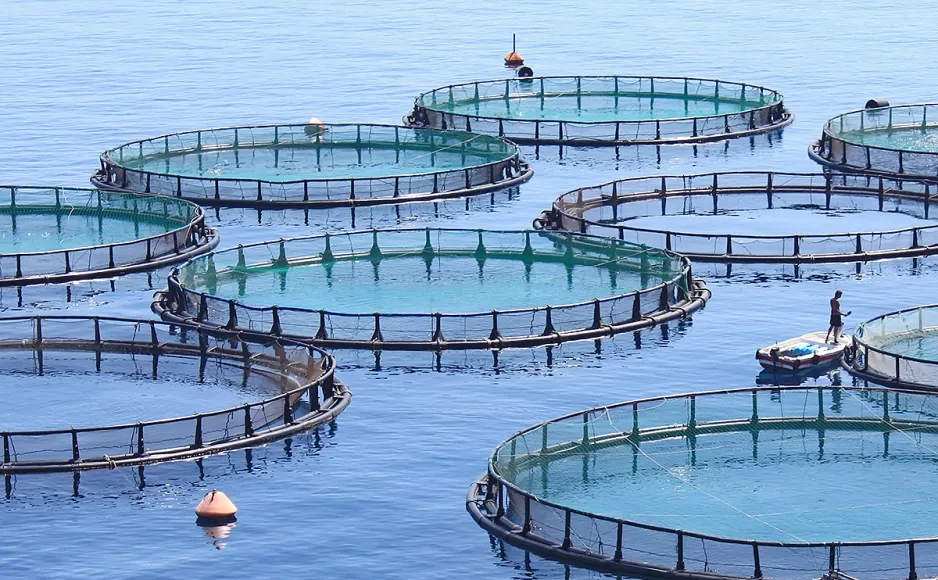
Net pens at a cage aquaculture site.
The most popular method, cage aquaculture, involves rearing fish in cages or "net pens" within natural water bodies. These systems are the least expensive to establish, and allow water flowing through cages to remove fish waste. However, this method has been heavily criticized for its impacts on wild fish populations and coastal environments. Within the Great Lakes area, Ontario is the only province or state to permit cage cultures, and the anticipated Aquaculture Act may formally move away from this controversial approach.
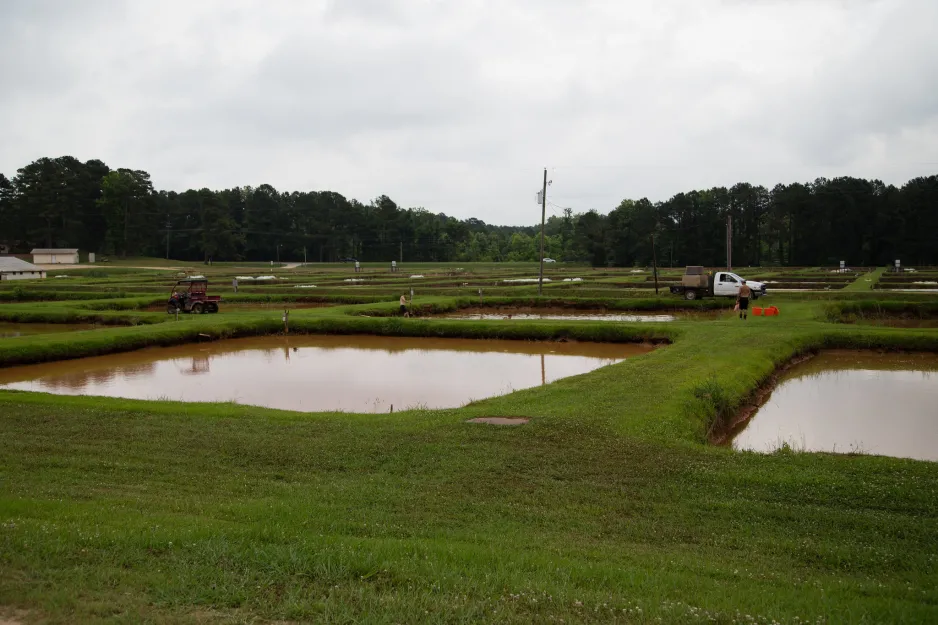
A simple pond system for seasonally rearing fish.
A similar concept, pond aquaculture involves raising fish seasonally in natural or constructed ponds. This affords slightly more control over variables such as oxygen content and chemical treatments, and allows water to be treated before release into the environment. Historically, farmers in prairie provinces were encouraged to stock small basins on their property with rainbow trout in spring. These fish eat insects already present in the ponds, and can then be harvested in the fall as a secondary source of income.
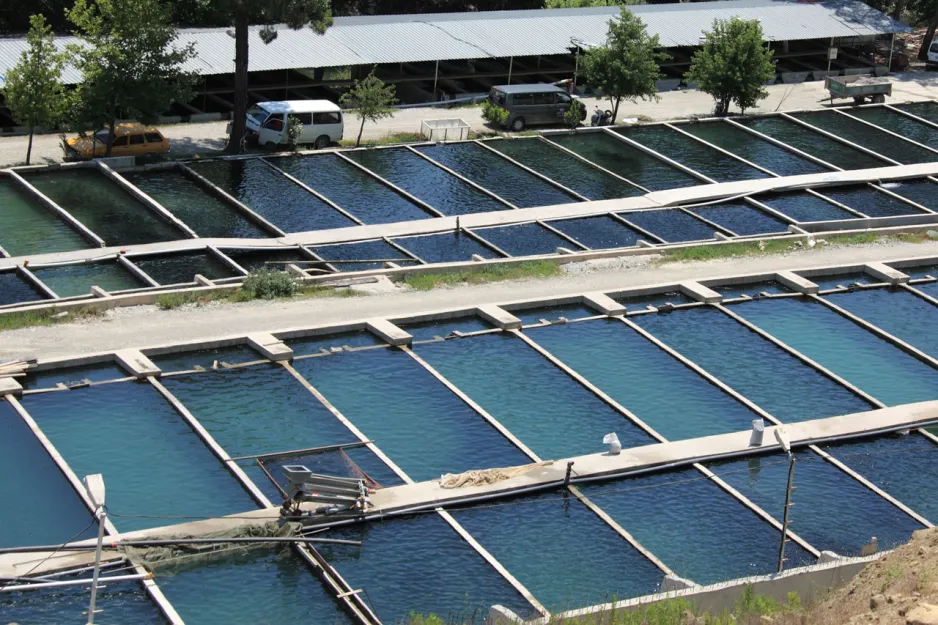
A flow-through raceway facility for trout farming.
Flow-through systems use longer channels with a constant flow of fresh water to culture fish. This technique requires almost 50 times more water than pond aquaculture, but maintains dissolved oxygen levels and allows fish to be cultured at higher densities year-round.
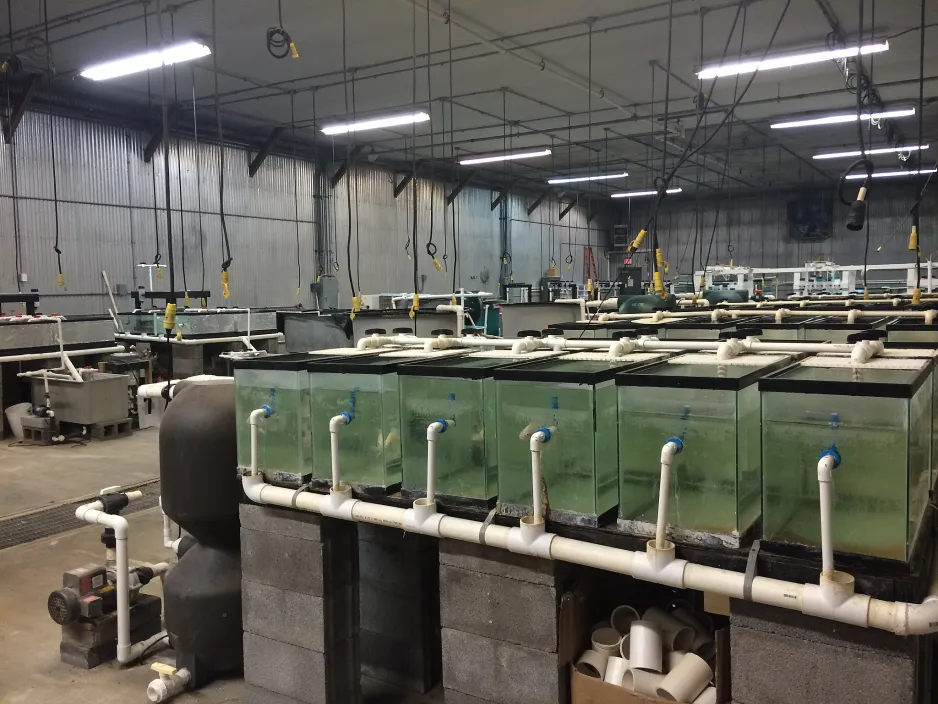
A recirculating system, where many finfish are raised under carefully controlled conditions.
Farmers have the greatest control over environmental conditions and waste removal with recirculating systems. These facilities use carefully monitored tanks to maintain precise water temperature and oxygenation. Biofilters with nitrifying bacteria convert ammonia from fish waste into nitrate, and sediments are removed by settling or filtering. Ultimately, more than 95 per cent of water is reused: recirculating systems require 50 times less water than pond aquaculture! With mechanical feeding and oversight over many variables, recirculating systems produce consistent outcomes and large seafood yields all year.
Bait and tackle: Addressing issues
Despite ongoing advances, fish farming continues to encounter resistance, especially concerning its environmental impacts. One criticism is the risk of farmed fish escapes, which could facilitate disease spread and lead to interbreeding or competition with wild fish populations. These concerns primarily relate to cage aquaculture: fish are unlikely to re-enter natural environments from pond or recirculating systems.
Thankfully, few non-native species in the Great Lakes are linked to aquaculture, and they were largely introduced by government agencies stocking areas for sport and commercial fishing. Today, cage-culture facilities use a variety of methods to prevent escapes and limit impacts if farmed fish do enter an ecosystem. Farms use remote-controlled cameras and repair vehicles to address damaged areas of nets. Farmed species may also be unable to survive in natural environments, or unable to breed with wild populations. For example, applying heat and pressure to eggs can produce sterile fish, which have extra chromosomes that make them genetically incompatible with their wild counterparts.
Besides interbreeding, there are also protocols to reduce disease transmission to wild populations. Aquaculturists work closely with veterinarians to monitor for stress and disease. Insecticides have been used for sea lice, but novel methods like pressurized water streams and camera-assisted counting can also address these persistent pests. Fish are vaccinated against common viral and bacterial infections, which makes disease transmission to wild populations highly unlikely. By taking these preventative measures, Canadian fish farmers now use far fewer antibiotics.
Plastic pollution from damaged nets and buoys is also a concern. Nets are moored strongly to the shore at cage culture facilities, and new UV-resistant plastics break down less readily. Some aquaculture plastics are recycled into construction materials, but "biofouling" by accumulated aquatic plants and microorganisms makes this challenging. Recently, nets have been developed from copper alloy mesh, which resists algae buildup and can be fully recycled once decommissioned.
While they are a less overt form of pollution, nutrients from fish waste can cause overgrowths of algae under floating cages. Decomposition of algal blooms uses up dissolved oxygen and can cause die-offs of other aquatic species. Luckily, land-based aquaculture systems can use this phosphorus-rich wastewater as crop fertilizer. Cutting-edge Canadian research has also led to improved feed-conversion efficiency and reduced phosphorus in fish waste! Carnivorous fish were traditionally fed imported fish meal, but the vital omega-3 component is now being replaced with alternatives from grains, algae, and even fisheries byproducts.
As we enter the Ocean Decade, it will be exciting to watch the growth of Canada’s burgeoning aquaculture industry. As the industry transitions to more environmental practices, we will likely see new investments in research and innovation. The tides are changing; aquaculture has enormous potential to bolster food security and the national economy — all while preserving our treasured coastal ecosystems.



